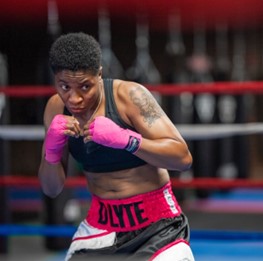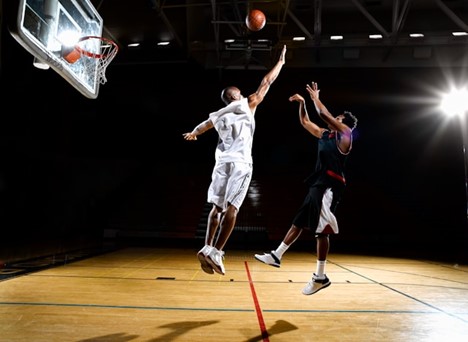Mike Golub is a sports industry leader across diverse sports properties and markets. With experience spanning all five major sports leagues, Mike Golub has managed teams and venues in both major cities and smaller markets. In the following article, Mike Golub delves into the impact of athletic endorsements on consumer purchasing behaviors.
Athlete endorsements have become a powerhouse in the marketing world, with brands often seeing a significant boost in sales and brand perception as a result. For instance, a study by Nielsen found that athlete endorsements can increase brand sales by up to 20%, underscoring their powerful influence.
Athlete endorsements involve a partnership where a brand collaborates with a professional athlete to promote its products or services. These endorsements typically include the athlete appearing in advertisements, participating in promotional events, or using the brand’s products publicly.
Mike Golub says that understanding the impact of athlete endorsements is crucial for brands and marketers as it provides insight into how these partnerships can influence consumer behavior, enhance brand visibility, and drive sales.
Mike Golub Emphasizes the Power of Athlete Endorsements
Psychological Influence
Celebrity Endorsement Theory: This theory posits that celebrities, including athletes, can significantly affect consumer behavior by leveraging their fame. The endorsement works by associating the positive attributes of the athlete, such as success, talent, and charisma, with the brand, which in turn can positively influence consumer perceptions and purchasing decisions.
Credibility and Trust: Athletes often carry a high level of credibility and trustworthiness in their professional domains. Consumers are more likely to trust and be persuaded by products endorsed by athletes they admire, which enhances the perceived reliability and quality of the endorsed products.
Emotional Connection
Brand Affinity: Fans often develop strong emotional connections with athletes. When these athletes endorse a product, their fan base may experience a sense of loyalty and affinity towards the brand, leading to increased brand loyalty and repeat purchases.
Personal Identification: Mike Golub notes that consumers often see athletes as role models or aspirational figures. When consumers identify with an athlete, they may be more inclined to purchase the products the athlete endorses, believing that doing so brings them closer to emulating the athlete’s success or lifestyle.
The Mechanisms Behind Athlete Endorsements
Brand Visibility
Increased Exposure: Athlete endorsements can dramatically increase brand visibility through various channels, including media appearances, social media posts, and advertising campaigns. The athlete’s reach and influence can introduce the brand to a wider audience, enhancing its market presence.
Target Audience Reach: Brands can strategically select athletes who align with their target demographics. For example, an athlete who resonates with younger audiences can help a brand reach this specific age group effectively.
Influence on Brand Perception
Increased exposure through athlete endorsements offers a powerful advantage for brands aiming to boost their visibility and market presence. Athletes often have substantial media exposure through interviews, appearances, and personal social media accounts, which provides a broad platform for brands to showcase their products or services. Mike Golub explains that when an athlete advocates for a brand, their endorsement extends across various channels—TV commercials, social media posts, and sponsored content—amplifying the brand’s message to a diverse and engaged audience. The athlete’s personal brand and public image can lend credibility and attract attention, drawing in potential customers who may not have been reached through traditional marketing methods.
Moreover, the strategic selection of athletes based on target audience demographics allows brands to tailor their marketing efforts effectively. By choosing athletes whose personal brand and public persona resonate with specific consumer segments, brands can ensure that their messaging reaches the most relevant audiences. For instance, a brand targeting younger consumers may partner with a rising star in a popular sport or a trending social media influencer whose fan base matches the brand’s target demographic. This targeted approach not only maximizes the impact of the endorsement but also enhances the brand’s ability to connect with and engage potential customers on a more personal level.
Overall, Mike Golub notes that athlete endorsements offer brands a multifaceted approach to increasing visibility and reaching targeted audiences. The combination of enhanced exposure and strategic alignment with consumer demographics can drive brand recognition, foster consumer loyalty, and ultimately contribute to increased sales and market share.
High-Profile Examples
One notable example is the successful partnership between athletes and sportswear brands, where athletes’ endorsements have led to substantial increases in brand sales and market share. These endorsements leverage the athlete’s athletic prowess to promote the brand’s performance-oriented features.
Beyond sportswear, athlete endorsements have proven effective across various product categories, including sports drinks, health products, and tech gadgets. Each category benefits differently from the athlete’s association, whether by highlighting performance benefits or lifestyle enhancements.

Lessons Learned
Effective strategies for athlete endorsements hinge on aligning the athlete’s personal brand with the product’s attributes and target audience. When selecting an athlete, Mike Golub reports that brands should focus on those whose values, personality, and public image resonate with the product’s identity and the interests of the target consumer base. For instance, a sportswear brand might choose an athlete known for their dedication to fitness and health, as this alignment reinforces the product’s credibility and appeal. Similarly, an athlete with a strong connection to a specific demographic, such as a young and trendy sports star for a youth-oriented brand, can enhance the endorsement’s effectiveness by directly reaching and engaging the intended audience.
Successful endorsement campaigns are often characterized by their creativity and authenticity. Campaigns that authentically integrate the athlete’s persona with the brand’s message tend to resonate more deeply with consumers. For example, rather than simply featuring the athlete in a generic ad, a campaign that showcases the athlete using the product in a real-life, relatable context can create a more genuine connection with the audience. This approach not only highlights the product’s benefits but also leverages the athlete’s influence in a way that feels natural and believable.
Avoiding common pitfalls is crucial to maintaining the endorsement’s effectiveness. One major pitfall is choosing an athlete whose public image or personal values conflict with the brand’s values. If an athlete engages in behavior or holds views that are at odds with the brand’s message, it can lead to a dissonance that alienates potential customers and damages the brand’s reputation. Mike Golub remarks that if a health-oriented brand partners with an athlete known for unhealthy lifestyle choices, it undermines the brand’s credibility.
Another pitfall is failing to manage the endorsement relationship effectively. Overexposing the athlete through excessive promotions or using them in too many campaigns can dilute the impact of the endorsement and lead to consumer fatigue. It’s important for brands to strike a balance, ensuring that the athlete’s involvement feels special and impactful without becoming repetitive or overly commercialized.
How Brands Can Leverage Athlete Endorsements Effectively
Choosing the Right Athlete
Alignment with Brand Values: It is essential for brands to select athletes whose personal values and public image align with the brand’s ethos. Mike Golub says that this alignment ensures authenticity in the endorsement and prevents potential conflicts.
Target Audience Match: Brands should choose athletes who resonate with their target demographics. This strategic alignment can enhance the effectiveness of the endorsement by reaching the right consumer segments.
Crafting a Compelling Partnership
Creative Campaigns: Engaging and authentic endorsement campaigns can significantly enhance consumer engagement. Brands should focus on creating compelling narratives that connect the athlete’s story with the brand’s message.
Long-Term Relationships: Building long-term partnerships with athletes can offer sustained benefits compared to one-off endorsements. Long-term relationships allow for deeper connections with consumers and more consistent brand messaging.

Metrics and Analytics: Assessing the Effectiveness of Athlete Endorsements
To accurately gauge the success of athlete endorsements, Mike Golub explains that brands need to employ a range of metrics and analytics. Key performance indicators (KPIs) such as Return on Investment (ROI), brand awareness, and consumer engagement provide valuable insights into how well the endorsement is performing.
Return on Investment (ROI): Measuring ROI involves comparing the financial return generated by the endorsement against the costs incurred. This includes direct expenses like the athlete’s fee, as well as indirect costs such as production and distribution. ROI helps brands determine whether the investment in the endorsement is yielding a favorable financial outcome. For instance, if the endorsement leads to a significant increase in sales that outweighs the endorsement costs, the ROI is considered positive.
Brand Awareness: Tracking changes in brand awareness helps evaluate the endorsement’s reach and impact on the brand’s visibility. Metrics such as media impressions, social media mentions, and search engine traffic can provide insights into how much more the brand is being talked about as a result of the endorsement. Tools like Google Analytics and social media analytics platforms can measure spikes in online activity and brand searches correlated with the endorsement campaign.
Consumer Engagement: Engagement metrics assess how well the endorsement is resonating with the target audience. This includes analyzing interactions such as likes, shares, comments, and click-through rates on social media and digital advertisements. Higher engagement levels often indicate that the endorsement is connecting effectively with consumers and generating interest in the brand.
Analytical Tools and Consumer Surveys: Brands can leverage analytical tools to track and interpret these metrics. Advanced analytics platforms provide in-depth data on campaign performance and consumer behavior. Additionally, consumer surveys can offer direct feedback on the endorsement’s influence on brand perception and purchasing decisions. Surveys can gauge how the endorsement has affected consumer attitudes and whether it has increased the likelihood of purchasing the product.
Feedback and Adaptation: Optimizing Endorsement Strategies
Gathering consumer feedback and adapting endorsement strategies based on this information is crucial for maximizing effectiveness.
Continuous Feedback Collection: Brands should regularly solicit feedback from consumers through various channels, such as surveys, focus groups, and social media interactions. This feedback can provide insights into how well the endorsement is being received and whether it is aligning with consumer expectations. For example, if consumers express a strong connection with the athlete’s endorsement or provide suggestions for improvement, brands can use this information to refine their approach.
Iterative Adaptation: An iterative approach involves continuously assessing the endorsement’s performance and making necessary adjustments. This might include tweaking the campaign messaging, altering the frequency of the endorsements, or even adjusting the selection of the athlete if the initial choice is not yielding the desired results. Brands should be flexible and responsive to changes in consumer preferences and market conditions.
Ensuring Alignment with Evolving Preferences: Consumer preferences and market trends can shift over time. By staying attuned to these changes and adapting endorsement strategies accordingly, brands can maintain relevance and effectiveness. For example, if a new trend emerges that aligns with the brand’s values, incorporating it into the endorsement strategy can help keep the campaign fresh and engaging.
Measuring Adjustments’ Impact: After implementing changes based on feedback, brands should track the impact of these adjustments on key metrics. This helps determine whether the modifications have improved the endorsement’s effectiveness and ensures that the strategy remains aligned with the brand’s goals and consumer expectations.
Ethical Considerations and Challenges
Maintaining Authenticity
Overexposure of an athlete in endorsements can lead to diminished effectiveness and consumer fatigue. Brands should carefully manage the frequency and context of endorsements to maintain impact.
Additionally, Mike Golub notes that if an athlete becomes involved in controversy, it is crucial for brands to have strategies in place to manage the situation effectively. Transparent communication and crisis management are essential for protecting the brand’s reputation.

Compliance and Transparency
Disclosure Requirements: Adhering to legal and ethical standards for endorsement disclosures is essential for maintaining transparency and avoiding potential legal pitfalls. In many jurisdictions, regulations mandate that brands clearly disclose when an endorsement is a paid promotion. This requirement ensures that consumers are aware of the nature of the relationship between the brand and the athlete, fostering transparency and trust.
Legal Standards: In the United States, the Federal Trade Commission (FTC) enforces guidelines that require clear and conspicuous disclosure of material connections between endorsers and brands. This means that when an athlete is compensated for promoting a product, the endorsement must be clearly identified as such. For example, social media posts should include hashtags like #ad or #sponsored to signal to followers that the content is part of a paid partnership. Similar regulations exist in other countries, each with specific requirements for disclosure.
Ethical Considerations: Beyond legal obligations, ethical standards dictate that brands should disclose endorsements in a manner that is honest and straightforward. This includes ensuring that the nature of the relationship is transparent and not misleading. For instance, if an athlete is endorsing a product they genuinely use and support, it should be communicated honestly to avoid misleading consumers about the nature of the endorsement.
Consumer Trust: Transparency and authenticity are crucial for maintaining and building consumer trust in athlete endorsements. When brands are open about their endorsement relationships, they foster a sense of credibility and integrity with their audience.
Building Positive Relationships: Transparent endorsements help establish and reinforce positive relationships between brands and consumers. When consumers are aware that an endorsement is a paid partnership, they can more accurately interpret the endorsement’s context. This openness helps mitigate any perceptions of deception and supports a more genuine connection between the brand and its audience.
Enhancing Brand Authenticity: Authenticity in endorsements involves ensuring that the athlete’s endorsement aligns with their genuine experiences and beliefs about the product. Consumers are more likely to trust and engage with endorsements that feel sincere rather than contrived. For example, if an athlete genuinely uses and benefits from a product, their endorsement will resonate more authentically with consumers, reinforcing the brand’s credibility.
Avoiding Mistrust: Lack of transparency or failure to disclose endorsements can lead to mistrust and potential backlash. Consumers may feel misled if they discover that an endorsement was not disclosed or if they perceive the endorsement as insincere. Brands that prioritize clear and honest communication about their endorsements are less likely to face such issues and more likely to maintain positive consumer relationships.
Implementing Best Practices: To adhere to disclosure requirements and build consumer trust, brands should implement best practices such as:
- Clearly labeling sponsored content across all platforms, including social media, websites, and advertisements.
- Providing detailed information about the nature of the endorsement relationship in promotional materials.
- Educating athletes and brand representatives on disclosure requirements and the importance of transparency.
Monitoring and Compliance: Brands should continuously monitor their endorsement practices to ensure compliance with disclosure regulations and ethical standards. This includes regularly reviewing advertising content and making adjustments as necessary to align with evolving guidelines and consumer expectations.
In summary, adhering to disclosure requirements is not only a legal obligation but also a crucial aspect of maintaining consumer trust in athlete endorsements. By ensuring transparency and authenticity, brands can build stronger, more positive relationships with their audience, enhancing the overall effectiveness and credibility of their endorsement campaigns.
Conclusion
Mike Golub explains that athlete endorsements have a profound impact on consumer behavior, influencing brand perception, increasing visibility, and driving sales. Understanding how to leverage these endorsements effectively can provide significant benefits for brands.
The role of athlete endorsements in marketing is evolving, with trends such as increased focus on authenticity, digital engagement, and social responsibility shaping future strategies.
Brands should carefully consider their athlete endorsement strategies, leveraging insights to create impactful and authentic partnerships that drive positive consumer behavior and enhance brand success.







